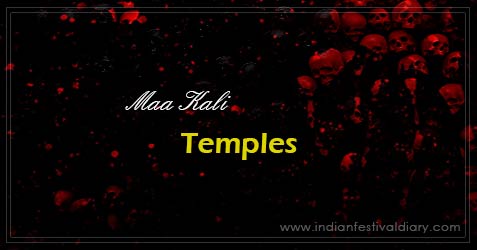In the year 1847, the wealthy widow Rani Rasmani prepared to go upon a long pilgrimage to the sacred city of Banaras to express her devotions to the Divine Mother. In those days there was no railway line between Calcutta and Banaras and it was more comfortable for rich persons to make the journey by boat rather than by road. We are told that the convoy of Rani Rasmani consisted of twenty four boats carrying relatives, servants, and supplies. But the night before the pilgrimage began, the Divine Mother, in the form of the goddess Kali, intervened. She appeared to the Rani in a dream and said, "There is no need to go to Banaras. Install my statue in a beautiful temple on the banks of the Ganges river and arrange for my worship there. Then I shall manifest myself in the image and accept worship at that place."
Profoundly affected by the dream, the Rani immediately looked for and purchased land, and promptly began construction of the temple. The large temple complex, built between 1847 and 1855, had as its centerpiece a shrine of the goddess Kali, but also had temples dedicated to the deities Shiva and Radha-Krishna. A scholarly and elderly sage was chosen as the head priest and the temple was consecrated in 1855. Within the year this priest died and his responsibility passed to his younger brother, Ramakrishna, who over the next thirty years would bring great fame to the Dakshineswar temple.
History
Dakshineshwar in Hooghly district is known for its Kali temple, made famous through its association with Ramakrishna Paramahamsa, the spiritual Guru of the religious leader Swami Vivekananda.
Queen Rasmani the renowned queen of Janbazar, was the founder of this temple. In the year 1847, dreamed the wealthy widow Rani Rasmani dreamed the Divine Mother, in the form of the goddess Kali.
She appeared to the Rani in a dream and said, "There is not need to go to Banaras. Install my statue in a beautiful temple on the banks of the Ganges River and arrange for my worship there. Then I shall manifest myself in the image and accept worship at that place." Profoundly affected by the dream, Rani immediately purchased land from Mr. Hasti, and promptly began construction of the temple; it needs the time from 1847 to 1855. It cost an estimated Rs.9 lakhs of which, Rs. 2 lakhs was spent on the day of inauguration. The temple and its adjoining areas stand on 25 acres of land. The Ganga River flows beside the temple. To the east there are 12 Shiva temples. To the north of the Kali-temple is a Dalan of Radha-Krishna. There is a sort of courtyard behind the Shiva temple. Here stands the main temple where everyday, the mother Goddess is worshipped with ardent fervors, pomp and with great devotion. There is a long spacious Natmandir (Dancing hall) in front of the temple, where the goddess Dakshina Kali stands on the breast of Shiva. There are other subsidiary shrines on this temple compound. The temple, in conventional Nava-ratna style, measures 46 feet square and rise over 100 feet high. The temple is a large elongated building standing on a high platform with a flight of stairs. It is one of the largest temples of Calcutta. The temple compound on three sides - north, east and south - is enclosed by rows of guestrooms and offices.
